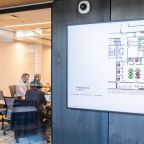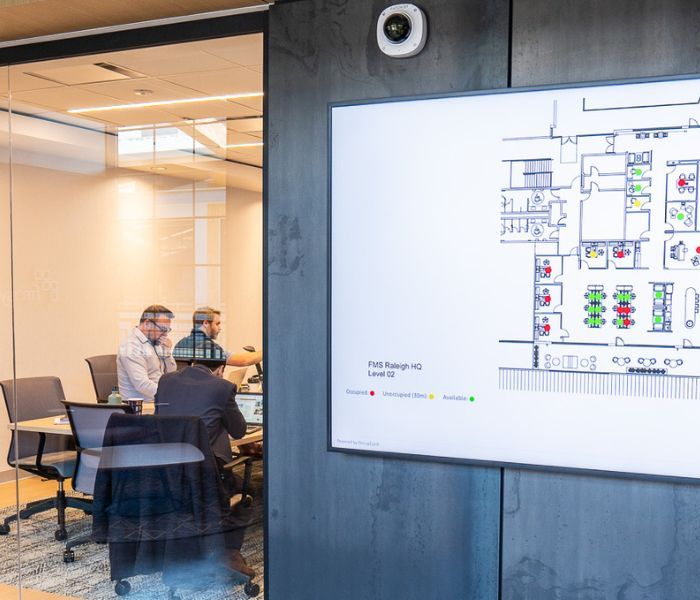2022 has been the year for returning to the office. But employees weren’t returning to the pre-pandemic office. Work and workspace changed dramatically through the course of the pandemic. Now, hybrid work models predominate for office-based workers and industries.
Now that everyone is back, what’s next for real estate and space management? Where do we go from here and how can property professionals keep space performing as the workplace evolves?
In this article, we will visit some of the latest research on hybrid / remote work and how the more permanent nature of work flexibility is driving changes in real estate and workplace design. To make intelligent decisions, space managers will need to capture and analyze more data. We will discuss the tools and techniques needed for effective multi-point data analysis.
No turning back from the hybrid remote work model
About half of U.S. full-time employees have jobs that can be performed remotely at least part of the time. Our own research finds 80% of workers want the option to work from home either all of the time or part of the time. According to the annual State of Remote Work Report with Global Workplace Analytics, 62% of workers feel more productive when working remotely.
The tight labor market combined with changing employee views of work/life balance have convinced most employers to offer flexible working arrangements longer term. Our research indicates 83% of companies plan to expand their adoption of flexible work, especially hybrid work. In June 2022, Gallup revealed that, among remote-capable workers, 50% work hybrid, 30% work fully remote and only 20% are entirely on site. Clearly, hybrid work is here to stay.
What’s next for space management?
With a hybrid work model firmly in place for the future, companies have been hard at work this year reducing their real estate portfolios. Many opted to consolidate employees into owned real estate while letting go of leased properties. Some have sold unneeded owned real estate.
Some businesses are considering new strategies for office site location, opting for a more distributed approach. Does it make more sense to place small offices in areas closer to where hybrid employees live, rather centralizing workers in large office buildings in city centers? This would entail a shift in leasing strategy as well as consideration of flex space providers.



Organizations are studying their space needs closely
Managers are changing more than office locations and total square footage in real estate portfolios. Hybrid work may require a different mix of workspaces as people tend to come to the office for meetings and collaboration and do quiet, focused work on remote days.
Space management teams are studying usage trends to figure out whether they need more or fewer spaces in terms of desks, meeting rooms, huddle rooms, and more. They are turning to multi-point data analysis to optimize workspace performance.
Analyze, adjust and optimize with multi-point data analysis
Multi-data point workplace analysis examines a variety of workplace data to identify areas of improvement for your building or office portfolio with the potential to deliver more competitive advantage. It takes the guesswork out of decision-making and enables organizations to optimize the physical work environment for productivity.
Multi-point data analysis offers a data-driven and iterative approach to assessing your workforce needs and making steady, measurable improvements. To perform multi-point data analysis you will need multiple sets of workplace data, such as occupancy, attendance and utilization, along with a workplace analytics platform that can help you analyze and visualize this data through performance metrics and dashboards.
Learn more about multi-data point analysis
FMS:Insights is an advanced workplace analytics platform designed for multi-dimensional analysis of a broad range of workplace data sets. Organizations can deploy utilization sensors to track real-time occupancy as well as environmental sensors to study energy usage, productivity factors, such as humidity and temperature, and health and safety through indoor air quality (IAQ). FMS:Insights provides key insights to support strategic planning and decisioning.
Learn more about the best practices for multi-point data analysis: Download our free Multi-Point Data Analysis e-book.











